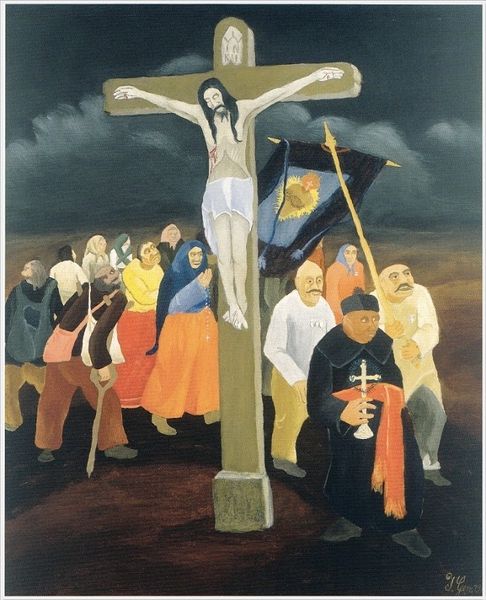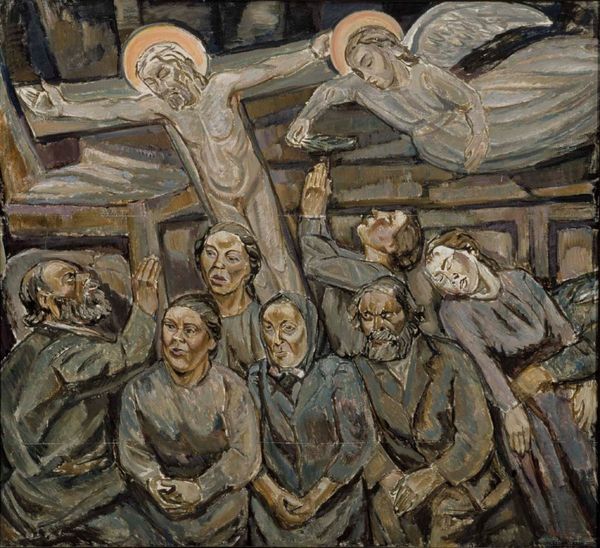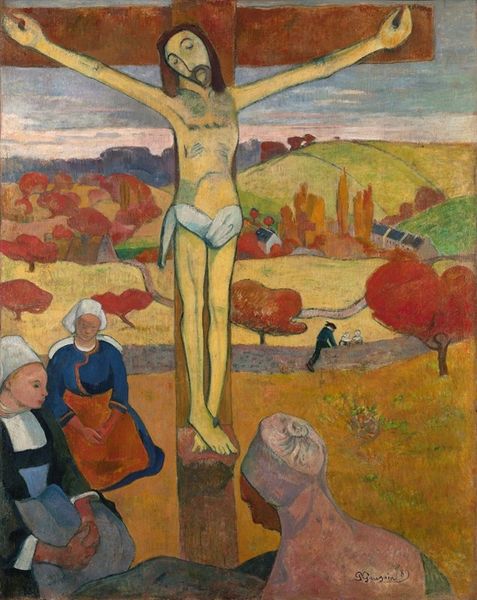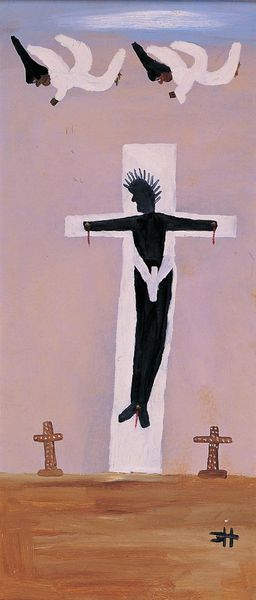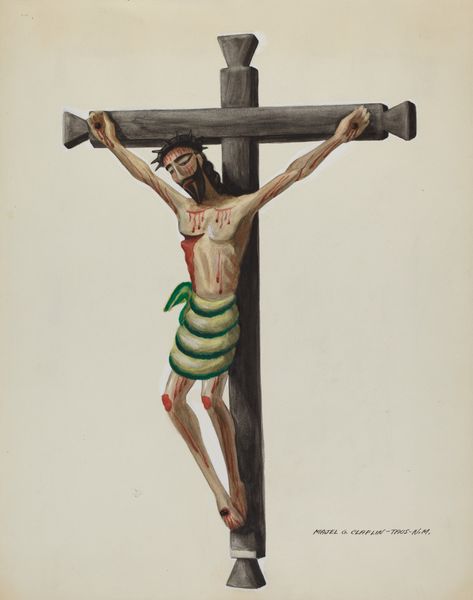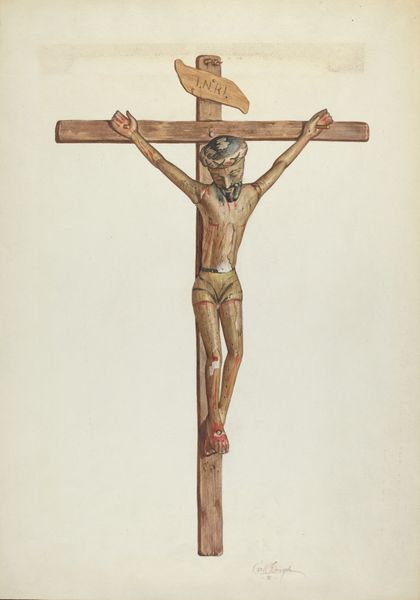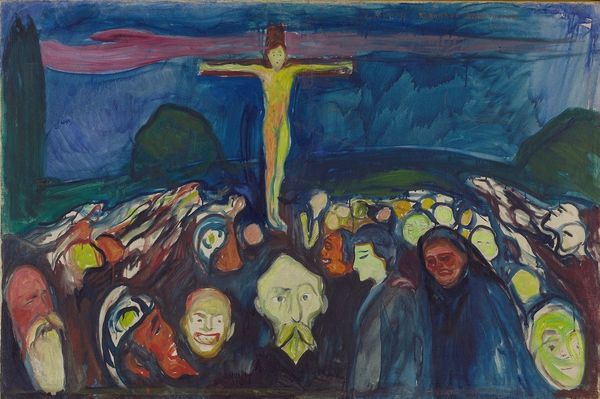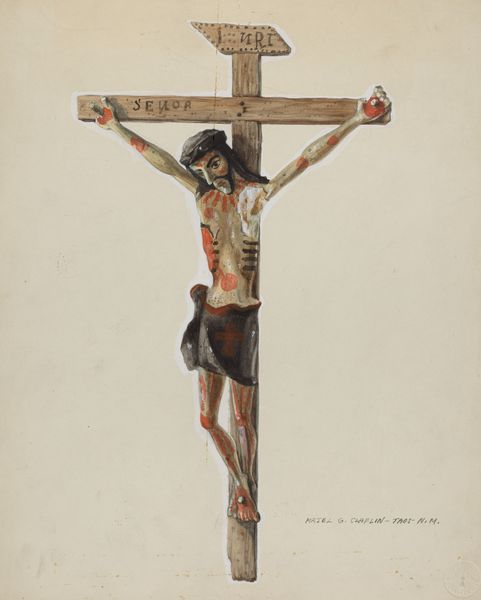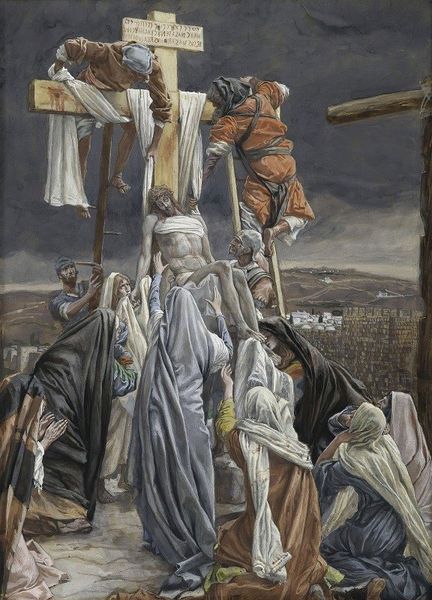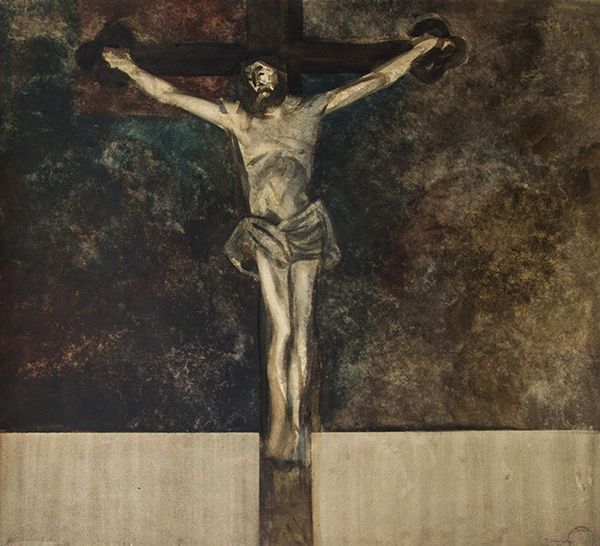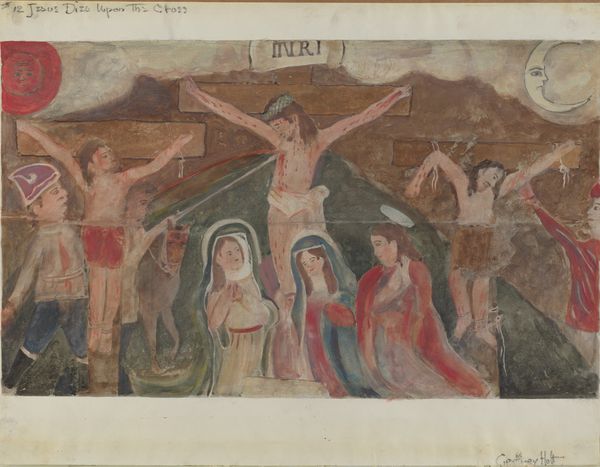
Dimensions: support: 864 x 991 mm frame: 1045 x 1164 x 85 mm
Copyright: © The estate of Gilbert Spencer | CC-BY-NC-ND 4.0 DEED, Photo: Tate
Editor: Here we have Gilbert Spencer's "The Crucifixion," held at the Tate. It's quite striking. The figures feel very grounded, almost like ordinary people. What formal elements stand out to you in this piece? Curator: Notice how Spencer uses a limited palette. The muted earth tones and the stark white shirts create a visual rhythm. Also, consider the geometric structure. The rigid cross juxtaposed with the figures produces a dynamic tension. Editor: So, it's less about religious symbolism and more about the relationships between shapes and colors? Curator: Precisely. The composition itself becomes the primary vehicle for meaning. It challenges our conventional expectations. What do you make of the positioning of the cross in relation to the ground? Editor: I see! The angle creates a sense of imbalance, like something is being uprooted. Curator: An astute observation! This careful manipulation of form is what makes Spencer's work so compelling. Editor: I see the painting differently now. Thanks for pointing out those key elements!
Comments
tate 6 months ago
⋮
http://www.tate.org.uk/art/artworks/spencer-the-crucifixion-t01903
Join the conversation
Join millions of artists and users on Artera today and experience the ultimate creative platform.
tate 6 months ago
⋮
Gilbert Spencer painted this for himself while he was a student at the Slade School of Art. There was no commission, but he was aware that he would soon be enrolled in the army, which probably affected his choice of such a violent subject. The style and subject resemble the paintings of Gilbert’s elder brother Stanley; it is set in Cookham Meadow, where they both lived. The activity shown also looks as though it might have been a study of how to lift a large wooden object on a farm. Gallery label, September 2004
